Tripe for dogs: what is it, how to prepare it and how much to give?
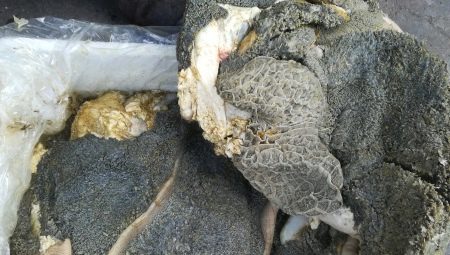
The range of foods that may be suitable for consumption by dogs sometimes has some rather unusual options. These include the scar - if properly prepared and introduced into the pet's diet, it can have a positive effect on its health and replenishment of the body with useful vitamins and microelements.

What it is?
The meat tripe belongs to the category of by-products, it is a section of the stomach of ruminants intended for the primary digestion of vegetable feed. In fact, the rumen is a muscle sac that can stretch, holding about 50 kilograms of hay, silage, mixed feed... This is due to elastic, but thick walls. Very often this product is called "offal".
Beef, lamb or even pork in an unpeeled raw version has an unattractive appearance, since the walls of the stomach are covered with numerous growths that look similar to the scalp. These glands secrete secretions that aid in the process of digesting food. The tripe on sale can range in color from light brown to black or greenish.
Upon contact with the offal, you can feel that it contains a certain amount of mucus.

Confusing the stomach with any other product will be quite problematic, not only in light of its external features, but also the aroma that will come from it during heat treatment. Therefore, some breeders have resorted to introducing a raw version or ready-made rumen-based foods into their pets' diet.However, even taking into account the unattractive appearance and smell of the stomach, it is considered one of the best meat ingredients a dog needs.

Benefit and harm
Before you introduce a scar, unfamiliar until this time, into the menu of your four-legged pet, you need to study its beneficial properties, as well as possible harm and contraindications for use.
Among the features that have a positive effect on the animal's body, the main quality of the by-product should be highlighted - the ability to compensate for the deficiency of basic enzymes. The rumen contains such important vitamins and minerals:
- vitamins B and PP;
- selenium;
- phosphorus;
- potassium;
- magnesium;
- iron;
- golden compounds;
- sodium.
The stomach will be useful both raw and thermally processed.
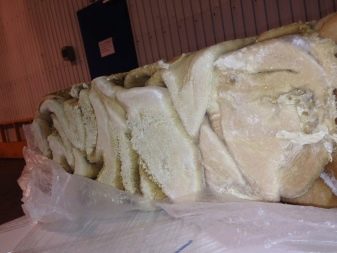
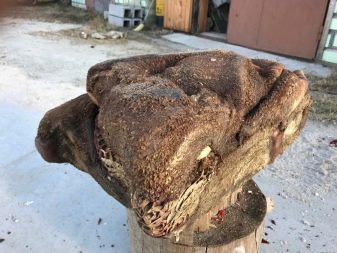
However, the first option will save more vitamins and antioxidants.
But there are also opinions regarding the inexpediency of introducing such a product into the dog's menu, especially without preliminary boiling. This is due to the risk of infection with parasites and other dangerous ailments. Uncontrolled and irregular use of the rumen, fraught with indigestion, can be harmful to health. If you prepare and process the product correctly, the benefits of the by-product will outweigh the existing concerns about its harm.
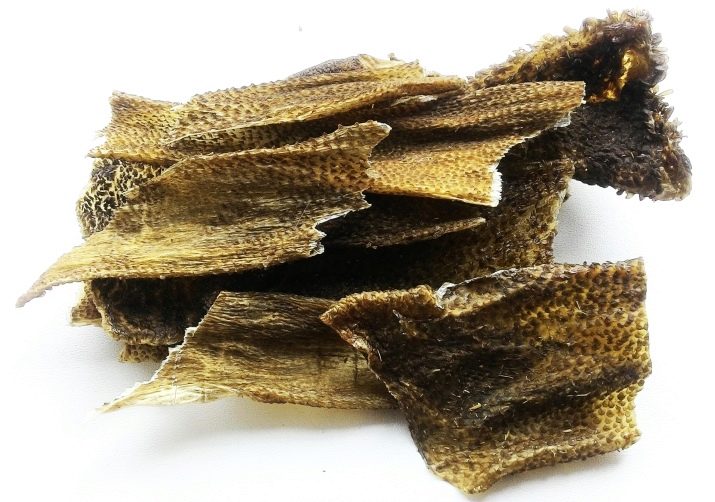
How to choose a scar?
On store shelves, the scar is not so often present. However, it can be realized in two forms - in its original form or in a purified form. Everything will depend on where the meat products were brought from. In large enterprises, there are special mechanisms that allow you to process the stomach, in private farms, such manipulations with offal are extremely rare.
The essence of cleaning is to remove impartial villi and mucus, but it is these components of the muscle sac that will be most useful for the dog's body.
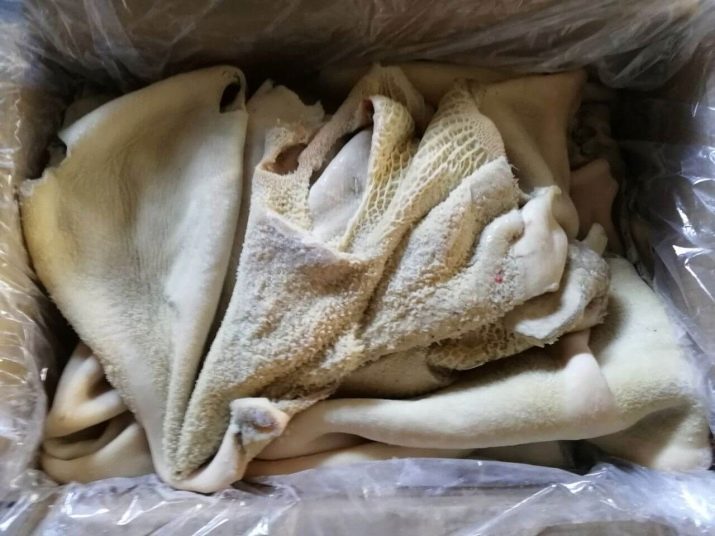
In any case, you should choose a stomach that will contain a minimum amount of fatty layer, and it is best to opt for beef products, in light of the fact that not every dog will like a mutton stomach.
In what form can you give?
The pet can be given both raw and boiled and even dried stomach. But even a raw tripe should be prepared for animal consumption. Before serving the raw product, it is necessary to carry out a number of manipulations with it.
- First, the product should be rinsed under plenty of running water. This way you can partially get rid of the unpleasant odor.
- Next, the stomach must be doused with boiling water, the top contaminated layer must be removed.
- After the scar is dry, it should be cut into pieces suitable for the dog to chew, depending on the size of the scar. Serve alone or with other ingredients intended for animal consumption.
The next cooking recipe will be to boil the product.
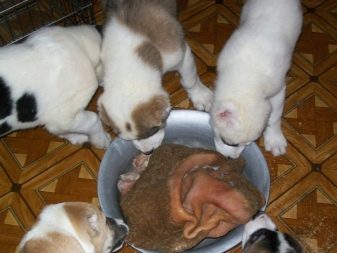
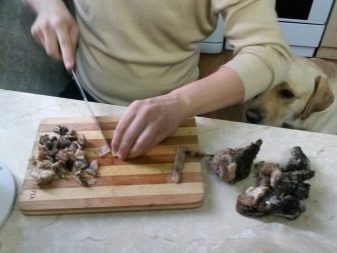
For such a heat treatment, you should use a special pan or container, since after boiling the scar, the walls of the dishes will be very difficult to wash.
Let's consider the algorithm of work.
- The main steps will be similar to those in the first case - first, the stomach must be flushed.
- Shake out the remains of the contents of the bag. Soak in cold water for 30 minutes.
- Get wet from excess liquid. Cut into pieces the size of a human palm. Cover with water, put on fire.
- When the product boils, you need to change the water in it, bring it to a boil again. The optimal number of fluid changes will be 3-5 times, then it will be possible to remove the unpleasant odor. On average, the scar will have to be cooked for about four hours. You can determine readiness with a knife or fork - if the offal is easily pierced, then it is already quite ready for use.
You can immediately boil the entire stomach, let it cool, divide it into portions for one meal, distribute in bags and put it in the freezer for storage.
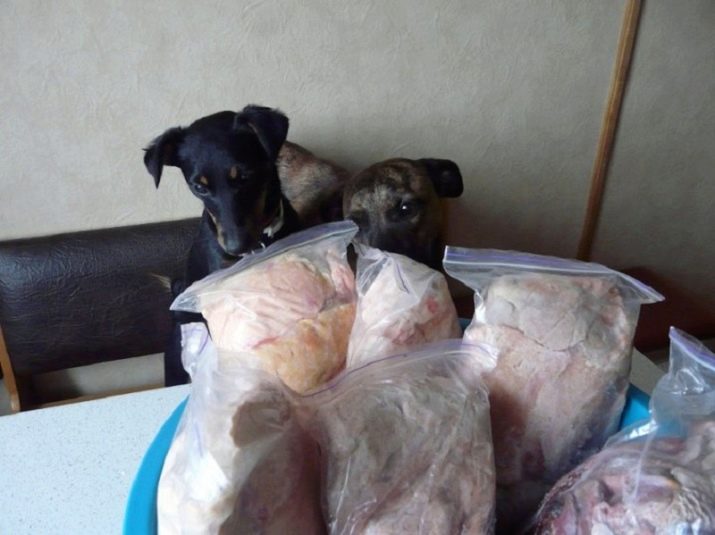
Get it out as needed, and just pour boiling water over the boiled finished product before feeding the dog.
Without a freezer on a shelf in the refrigerator, the offal can be stored for no more than one week.
Some producers and breeders of dogs dry the stomach in order to then feed it to the pet in this form. You can dry the scar at home in the oven. Sun-dried tripe is prepared with a little salt.
The algorithm for preparing such a delicacy will be as follows:
- raw tripe is washed, cut into strips;
- then boiled in salted water for 5-10 minutes;
- the next step is to dry in the oven at an average temperature of about two hours.
Such a product will prove to be not only a useful treat for dogs, but also a toy that can be offered to puppies when teething.

You can give your dog tripe as a stand-alone meal, or by mixing it with other foods, such as vegetables.
In this case, breeders should be aware that raw tripe should be served with vegetables without heat treatment, and the dog should eat boiled tripe with a boiled vegetable supplement. It is forbidden to mix raw and boiled components of the animal's menu, as this can provoke indigestion.
As mixes, you can consider:
- stomach with carrots and cabbage;
- tripe with pepper and zucchini;
- you can give the dog a tripe with cucumber, pumpkin and quail eggs;
- offal with herbs and the addition of a teaspoon of vegetable oil;
- tripe is combined with beef and apple;
- offal with broccoli and green beans;
- tripe with green peas and corn.
Mixed vegetables can be prepared from the food available in the refrigerator or purchased frozen.
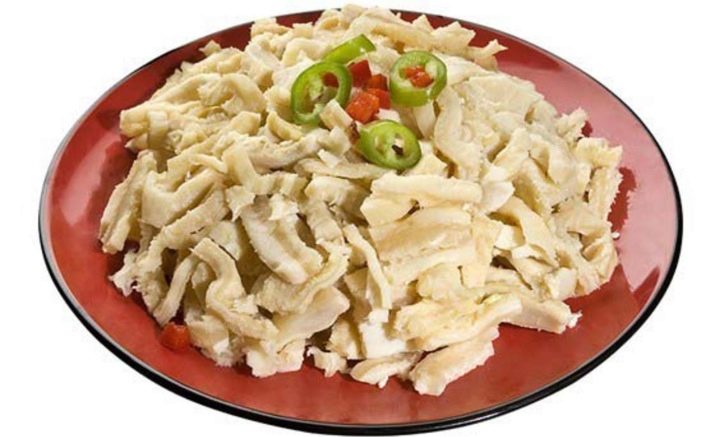
Selected ingredients can be cut into small cubes, grated, chopped in a blender until puree.
Frozen foods, like the stomach, are recommended to be doused with boiling water before feeding the pet.
Feeding rules
Based on the nutritional value and chemical composition of the stomach, they may well be able to replace one dog feeding. The breeder can choose the morning or evening meal for this himself. However, it is not worth abusing such a product, usually tripe without the risk of gastrointestinal upset is given 2 to 4 times a week.
It will be possible to calculate the rate in grams according to the following scheme: for every 10 kilograms of live weight of a dog, there are 100 grams of tripe.
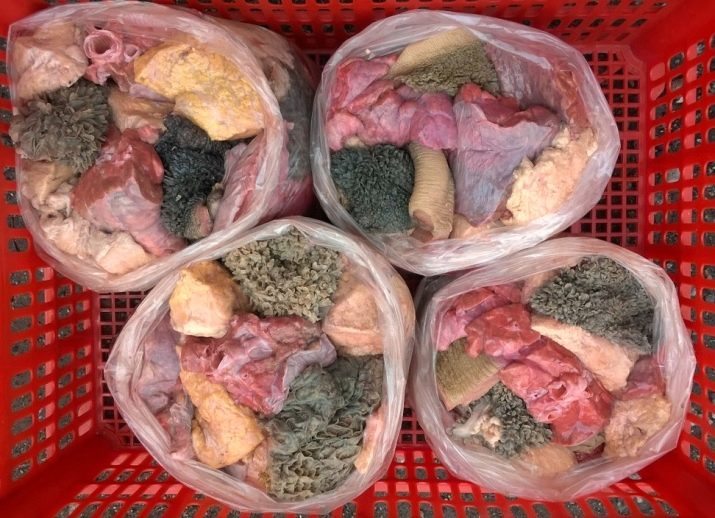
It is allowed to accustom puppies to the rumen from six months, but at the very beginning, you should carefully monitor the reaction of the animal's body to the introduction of a new ingredient.
The first time it is best to give a little scar to the dog in the morning, so that during the day you can observe its well-being. As a rule, animals fed on natural food should not have problems with digestion and assimilation of the rumen.
Vomiting can alert the breeder, as well as upset stools after eating the stomach. And also negative reactions to offal can appear in an animal over time. They are usually expressed in slower growth rates, changes in coat condition, and decreased activity in the dog. Before introducing a rumen into a dog's diet, it is useful to consult a veterinarian.
It is not recommended to give such a by-product to dogs on a dry diet. Since the combination of these feed options with each other can lead to an increased load on the gastrointestinal tract.
What is a scar, see below.






































